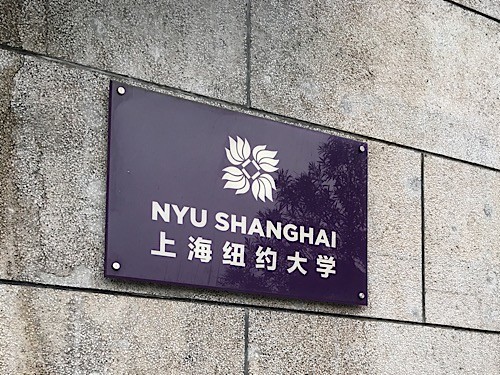
NYU Shanghai is the first Sino–US joint-venture university
By Michael Banks in Shanghai, China
It’s been a busy three days in Shanghai and now I’m on my way to Beijing to continue reporting for the China special report, which will be published in June.
As I mentioned in previous blog posts, Shanghai has thrown up some interesting stories. I heard about plans for a new 12 m telescope and also received a progress update on the construction of a new X-ray free electron laser in the city.
But that wasn’t all. I also went to East China Normal University (ECNU), which is the location for the physics institute at NYU Shanghai – the latest outpost of New York University (NYU).
NYU Shanghai is the first Sino–US joint-venture university and currently has around 1200 undergraduate students, around 50% of whom are from outside China. The first batch of students will graduate this year (with two degree certificates from NYU and NYU Shanghai) and the initiative also allows students to spend a year in New York or at another NYU branch.
The physics department at NYU Shanghai is small, with around four undergraduate students and four faculty. Yet that is set to expand, with the department also currently setting up a postgraduate programme.
While I was at the ECNU I also visited the Key State National Laboratory for Precision Spectroscopy. Laboratory director Guoxiang Huang showed me around the institute, which is bursting full of optical benches with around 20 labs focusing on areas such as quantum optics.
Following that was a quick visit to the Institute for Theoretical and Interdisciplinary Physics (ITIP), which is located at Shanghai Jiao Tong Univeristy. Built in 1993, the ITIP – as the name suggests – aims to foster interdisciplinary research, focusing on condensed matter, soft condensed matter and biophysics.
The department also collaborates with researchers at the university’s engineering and medicine departments. One example of such collaboration is studying protein dynamics by using neutron scattering and computer simulations.
Researchers at the ITIP say that support from the university – including funding and space (which is especially at a premium) – is a sign that interdisciplinary research is growing and becoming increasingly important.
So with Shanghai now behind me, it’s time to head to Beijing. It might be around 1200 km away, but I should be there in no time thanks to the country’s bullet trains being able to travel at a top speed of 300 km/h.
Guidelines
Show/hide formatting guidelines
this text was deletedwhere people live in harmony with nature and animals</q>
Some text